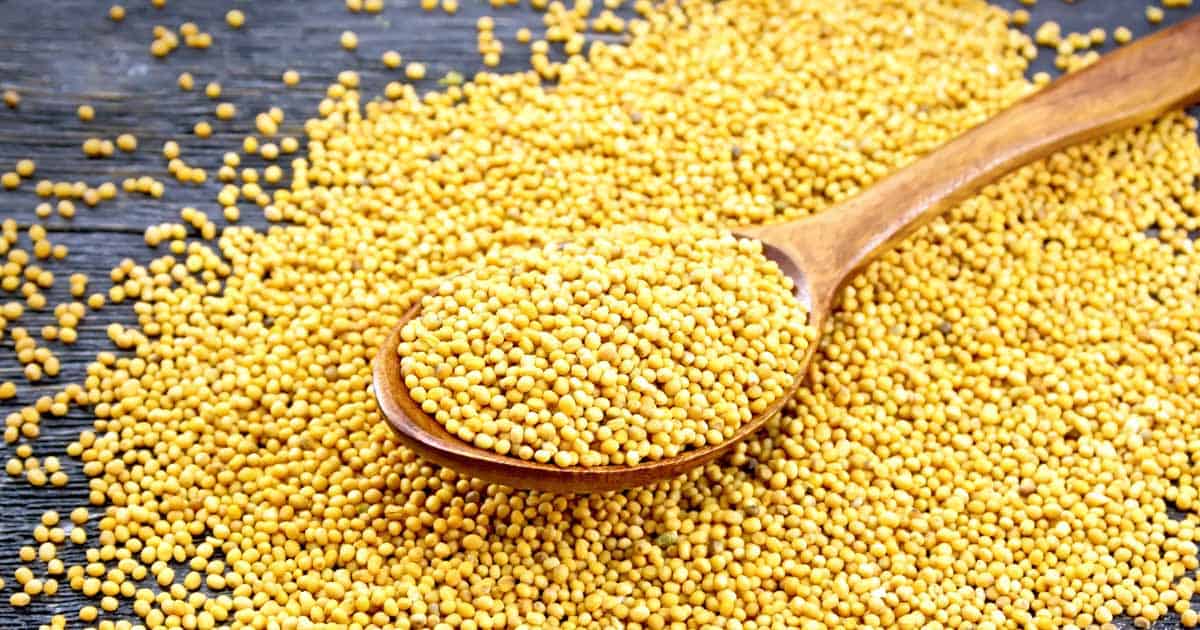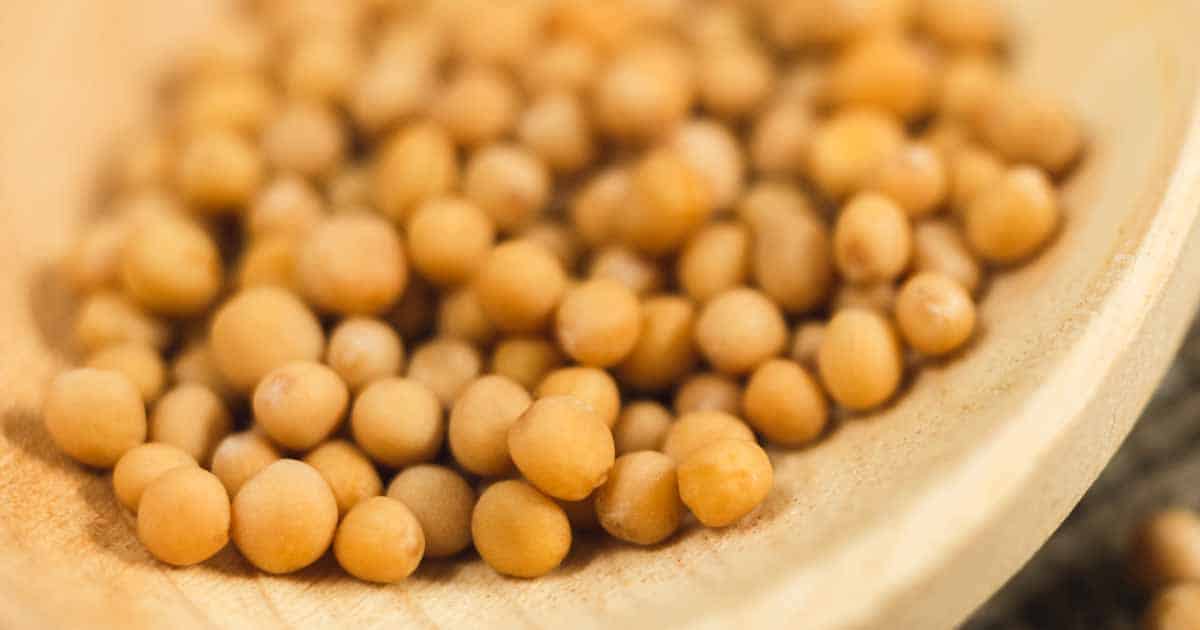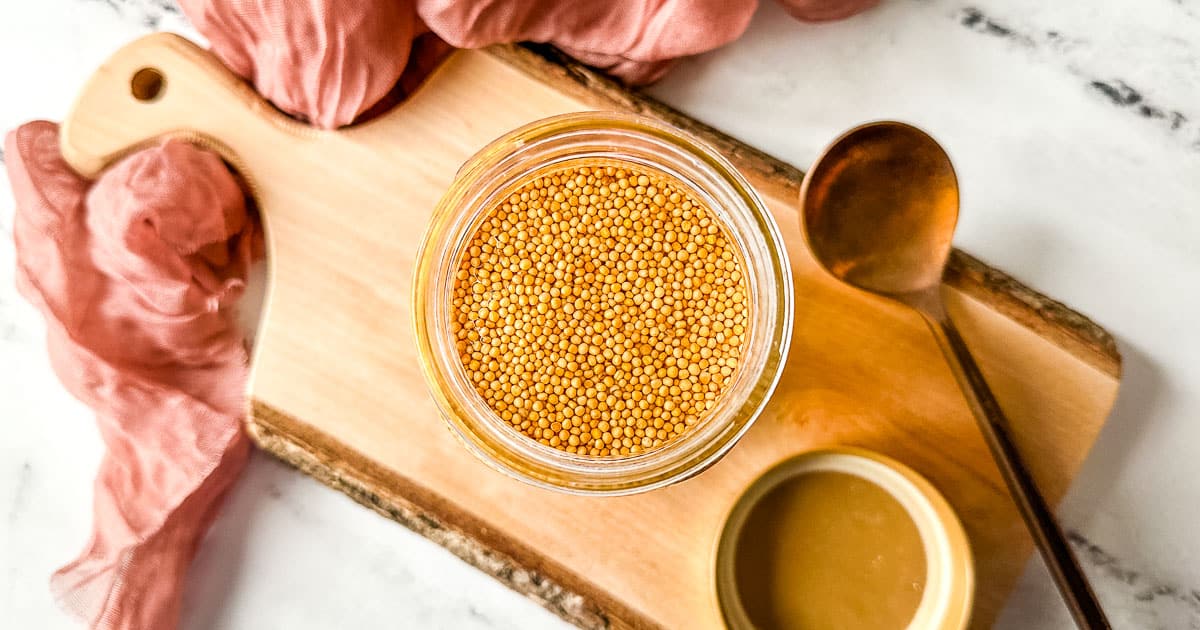Mustard seeds are the small brown or yellow seeds from the mustard plant. They are used as a spice in a variety of dishes, including pickles, curries, sauces and dressings. With a pungent, tangy flavor, these seeds add a unique flavor to a diverse range of cuisines.

Selecting mustard seeds
Mustard seeds come from the mustard plant. There are three varieties of this plant: brown mustard, white mustard and black mustard, scientifically named Brassica juncea, Brassica alba and Brassica nigra, respectively. The plant is a hardy annual. You can harvest your own seeds when the flowers have faded and turned brown. They will be filled with small yellow or brown mustard seeds. Mustard greens can also be harvested. If you don’t have space for an outdoor garden, you can buy mustard seeds at local grocery stores or spice shops.
When buying seeds from the store, you will want to purchase ones that are stored in an airtight container. They should have a yellow, dark or light brown coloring. Avoid seeds that are discolored or dull.
Visiting the local spice shop gives you a chance to smell the seeds before buying them. They should have a strong aroma with notes of earthiness, nuttiness and spiciness.
The taste of mustard seeds
Mustard seeds have a strong, sharp, tangy, mildly spicy and bitter taste. Their taste often depends on how they are prepared. Whole mustard seeds have a milder flavor, whereas ground mustard seeds are stronger in flavor. Use this ingredient conservatively, as they can overwhelm the taste of a dish.

Cleaning mustard seeds
You do not need to clean mustard seeds like you would with fresh herbs like parsley or basil. Remove any debris or dirt from your mustard seeds. There is no need to run. Whether you harvested them from your own garden or purchased them from the store, they are ready to store once this step has been completed.
Storage suggestions
You can harvest mustard flowers and allow them to dry indoors. Hang them upside down in a cool, dry place. Once they have fully dried, gently crush them or rub them between your hands to release the seeds. Remove any remaining plant material, such as pieces of the stem, in a sieve.
“As a South Indian, mustard seeds are a non-negotiable part of day-to-day cooking. I store my seeds in a traditional ‘spice dabba’, which is a circular container with smaller ramekin style vessels inside for holding various key spices, including mustard seeds, turmeric, cumin and red chili powder.”
— Shruthi Baskaran-Makanju, Urban Farmie
If you have purchased your mustard seeds at the market, store them in the container they came in. Much like bay leaves, mustard seeds should be stored in a cool, dry place. This will keep them flavorful for longer. Replace and dispose of old mustard seeds when the flavor has started to fade, and the seeds are brittle.
If you have a lot of mustard seeds, they can also be frozen. Place them in ice cube trays, cover them with water and freeze.

Culinary uses for mustard seeds
Bold spices like mustard seeds should be added at the beginning of the cooking process. Toasting or tempering mustard seeds will release their flavor.
“I love toasting mustard seeds as part of my curry-making process. Toasting them intensifies their earthy and nutty undertones and adds a wonderful depth of flavor to any dish they are used in.”
— Kristen Wood, MOON and spoon and yum
You can add mustard seeds to curries, soups and stews, sauces, spice blends, vegetable dishes and dressings. You can also make pickled mustard seeds, which are excellent in salads, on tartines and roasted meats.

Mustard seeds are used in many cuisines. Indian, South Asian, African, Middle Eastern, North American and European recipes all call for this ingredient.
“I always keep a jar of mustard seeds in my kitchen – they’re like tiny flavor powerhouses. Mustard seeds are a vital ingredient in Indian cooking, especially in South India, where they play a starring role in a technique called tempering. The process of sizzling them in hot oil until they pop releases a rich, nutty aroma that transforms any dish. I love using this traditional method to infuse curries, dals and chutneys with that distinct mustardy warmth. It’s my go-to for adding a touch of South Indian magic to my home-cooked meals!”
— Shilpa Kerur-Mazumder, Easy Indian Cookbook
Final thoughts
Mustard plants are annual, and they produce both mustard greens and mustard seeds. The seeds have a unique flavor with notes of earthiness, spiciness, tanginess and bitterness.
You can purchase them year-round at grocery stores, markets and spice shops. Choose seeds that are dark brown, light brown or yellow and that are not brittle or stale.
Store mustard seeds in a glass jar or another airtight container in a cool, dry, dark place like a pantry. You can also make ice cubes with mustard seeds and store them in the freezer for future use.
You can use mustard seeds in dishes like curries, soups and stews, sauces, spice blends, vegetable dishes and dressings. Pickled mustard seeds are also delicious. They can be used as a condiment on a variety of dishes, from roasted meats to salads. Toasting or tempering mustard seeds will increase the flavor they impart to a dish.
If you have never tried mustard seeds in your own cooking, be sure to buy a jar at your local spice shop and begin experimenting. You may just find your new favorite spice.
Gen La Rocca is a professional chef, writer and editor living in Southern California. She is the owner and recipe creator behind Two Cloves Kitchen, a food site featuring contemporary, California-inspired recipes. She has edited over 20 novels, short stories and essays for publication.